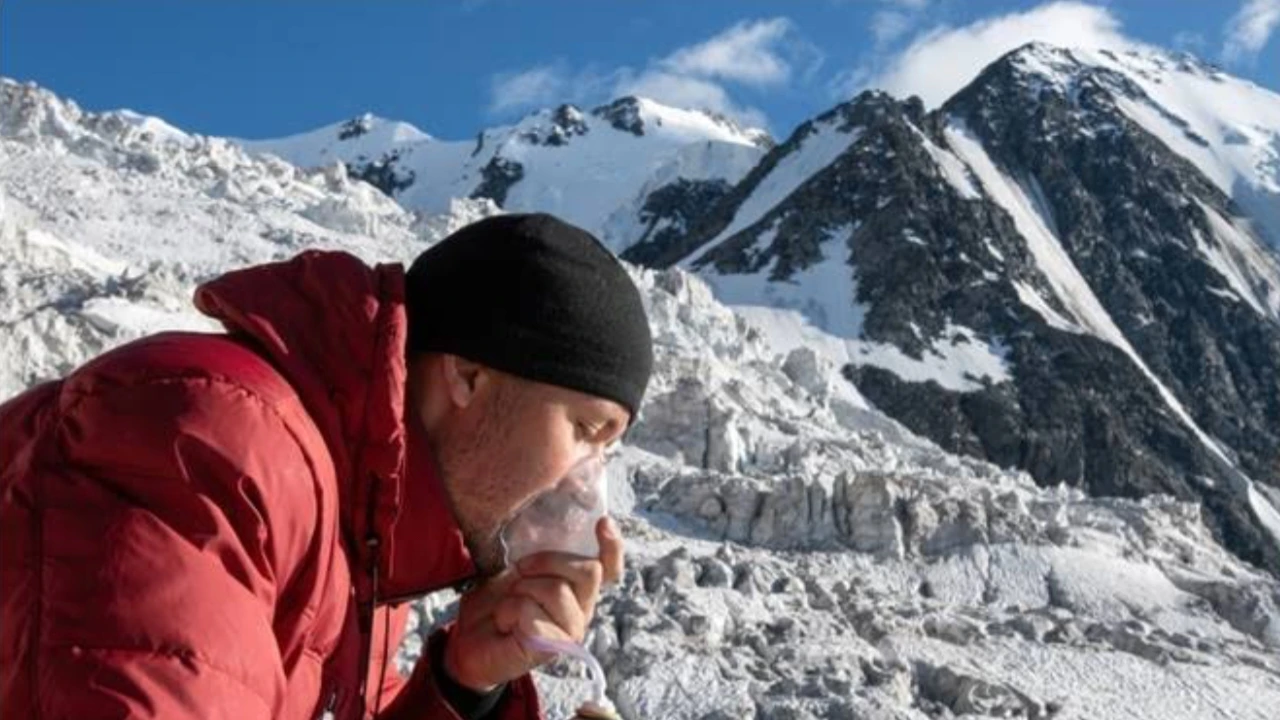Altitude sickness is a group of symptoms that appear when a person climbs too quickly to a certain height. Some of the symptoms are difficulty sleeping, shortness of breath, and headaches.
At a height of more than 1.500 meters above sea level (msl), air pressure begins to decrease and oxygen becomes thinner. This condition causes a person who is at that height to have to give his body time to adapt.
Altitude sickness or mountain sickness occurs when the body does not get enough time to adapt to changes in air pressure and oxygen levels at altitude. As a result, disorders appear in the nervous system, muscles, lungs, and heart.
Types of Altitude Sickness
Based on the type, altitude sickness is divided into three, namely:
- Acute mountain sickness (AMS), which is the mildest and most common form of altitude sickness .
- High-altitude cerebral edema (HACE), which is the accumulation of fluid in the brain that causes the brain to swell and not function normally.
- High-altitude pulmonary edema (HAPE), which is the accumulation of fluid in the lungs that causes organ dysfunction. Pulmonary edema can develop from HACE or occur by itself.
Causes of Altitude Sickness
Altitude sickness occurs when a person is at an altitude of more than 3,000 meters above sea level. At that height, the air pressure is decreasing and the oxygen level is decreasing. For people who are not used to being at a height, their bodies need more time to adapt to the conditions.
Symptoms of altitude sickness appear when the body does not get enough time to adapt to changes in air pressure and oxygen levels at altitude. Some conditions that can increase the risk of a person experiencing altitude sickness are:
- Live in the lowlands
- Have experienced altitude sickness before
- Climbing too fast (more than 300 meters per day)
- The climbing path is difficult and requires a lot of energy
- Disorders of the heart, lungs, or nervous system
Symptoms of Altitude Sickness
Symptoms of altitude sickness usually appear when a person is at an altitude of more than 3,000 meters above sea level. The symptoms can appear gradually or suddenly with mild to severe severity, depending on the speed of a person while climbing and the height reached.
Some common symptoms of altitude sickness are:
- Difficulty sleeping
- Fatigue
- Nausea and vomiting
- Headache
- Heart pounding
- Shortness of breath
In severe cases, altitude sickness can cause a number of the following symptoms:
- Bluish skin (cyanosis)
- The chest feels like it is being pressed
- Coughing up blood
- Difficult to walk
- Confused and irritable
- Decreased consciousness
When should you go to the doctor?
Immediately check yourself with a doctor if you or someone close to you experiences the symptoms that have been mentioned above. Inspections should also be done when there are a number of the following symptoms:
- Shortness of breath
- Severe headache
- Bewildered
- Very heavy sleepiness
- Hallucinations
- Behavioral change
- Coughing up blood
- Difficulty walking
- Decreased consciousness
Immediately seek medical help if you or someone close to you is still experiencing symptoms of altitude sickness when you are at low altitude, even if the symptoms are mild or have subsided.
Altitude Sickness Diagnosis
People who experience symptoms and complaints of altitude sickness need to be moved to a lower place first. That way, the complaints and symptoms experienced can be reduced.
Altitude sickness can be diagnosed by a doctor by asking the patient’s symptoms and performing a physical examination, including checking the sound of breathing using a stethoscope. In sufferers of altitude sickness, there is a build-up of fluid in the lungs so that an abnormal breathing sound will appear.
The doctor will also check the patient’s oxygen saturation using a pulse oximeter and a blood gas analysis test .
If the patient’s symptoms are severe, the doctor will scan with a CT scan and MRI to see the possibility of fluid build-up in the patient’s brain.
First Aid for Altitude Sickness
Get down immediately or take the victim to a lower place. It is important to remember, do not try to climb higher even if the symptoms are mild.
While bringing the patient down to a lower place, there are a number of first aid steps that can be taken to ease the symptoms of altitude sickness, namely:
- Loosen the victim’s clothes and give enough space so that the victim can breathe normally.
- Make sure the sufferer drinks plenty of water to prevent dehydration.
- Do not give alcoholic drinks or sleeping pills to the sufferer.
If the patient is on the mountain and his condition does not allow him to go down, contact the evacuation staff to take him down.
While waiting for help to arrive, keep the victim’s body temperature warm, limit physical activity, and let him rest.
Altitude Sickness Treatment
Symptoms of altitude sickness will usually subside after descending at an altitude of 300-600 meters lower than the previous altitude. In most cases, symptoms will disappear completely within 3 days.
In severe altitude sickness or if HACE or HAPE occurs, especially at an altitude of more than 1,500 meters above sea level, the sufferer must descend to an altitude below 1,200 meters above sea level and get medical help.
One of the treatments that will be done by the doctor to overcome altitude sickness is to give medicines, such as:
- Acetolazamide, to relieve symptoms of shortness of breath
- Dexamethasone, to reduce swelling in the brain
- Nifedipine, to relieve chest pain and shortness of breath
- Phosphodiesterase inhibitors, to increase blood flow to the lungs
In addition to the above medicines, the doctor will also provide breathing aids and oxygen therapy to ease the symptoms of altitude sickness.
Complications of Altitude Sickness
Altitude sickness is a very dangerous condition. If not treated immediately, sufferers can experience serious complications in the form of:
- Accumulation of fluid in the lungs (pulmonary edema)
- Brain swelling
- Coma
- Death
Prevention of Altitude Sickness
If you plan to climb a mountain or go to a plateau, it is best to know the altitude information of the area you will visit. Also find out what are the symptoms of altitude sickness that can occur and what is the first aid.
If you notice the symptoms early and do not disappear after 24 hours, immediately come down from the height so that the complaints experienced do not get worse.
The best way to prevent altitude sickness is with acclimatization, which is to give the body time to adapt to the conditions at altitude. The ways are as follows:
- Climbing gradually, no more than 300 meters per day
- Rest 1-2 days for each 600 meter hike
- Rest regularly if climbing a mountain with a height of more than 2,400 meters above sea level
- Practice before climbing a mountain and make sure you can and have practiced going down the mountain quickly
- Consume foods with high carbohydrate content and drink plenty of water to prevent dehydration
- Do not smoke, consume alcoholic or caffeinated beverages, or use sleeping pills while climbing the mountain
- Undergo a medical check-up with a doctor before climbing a mountain, especially if you have no previous climbing experience
References :
Verma, S. & Kuila, A. (2022). Role of Genomics, Proteomics, and Antioxidant Interventions in Preventing High Altitude Sickness. High Altitude Sickness–Solutions from Genomics, Proteomics and Antioxidant Interventions, pp. 173–83.
Williamson, J., Oakeshott, P., & Dallimore, J. (2018). Altitude Sickness and Acetazolamide. British Medical Journal, 361.
Centers for Disease Control and Prevention (2019). Traveller's Health. High Altitude Travel & Altitude Illness.
UK National Health Service (2020). Health A to Z. Altitude Sickness.
National Institutes of Health (2021). MedlinePlus. Acute Mountain Sickness.
American Academy of Family Physicians (2020). High-Altitude Illness.
Cleveland Clinic (2020). Diseases & Conditions. Altitude Sickness.
Mayo Clinic (2021). Exercise: When to Check with Your Doctor First.
Emedicine Health (2022). Altitude Sickness (Mountain Sickness).
Healthline (2018). Altitude Sickness.
MedicineNet (2021). When Should You Go to the Doctor for Altitude Sickness?
MSD Manual (2021). Altitude Sickness.
Patient Information (2020). Altitude Sickness.
WebMD (2021). Altitude Sickness: What to Know.

